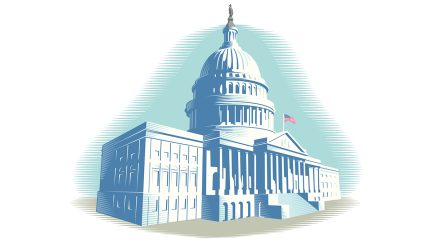For more stories like this, sign up for the PLANADVISERdash daily newsletter.
Plans of the Future
Plan design innovations, from employer matching in Roth accounts to student loan retirement matching and in-plan retirement income, are expected to gain more traction among plan sponsors in the coming decade.
But potential is one thing—what do plan advisers think will stick? And what are the stumbling blocks to their implementation?
Many employers may see these plan innovations as a way to both attract and retain workers, as well as help employees build a bigger nest egg and more smoothly transition into their retirement years.
Roth Friendly
Matthew Hedley, vice president, retirement services at OneDigital, believes more plan sponsors will offer employer matching in Roth accounts in the next several years.
Hedley said that employer matching in Roth accounts can be a “great strategy” for plan participants and sponsors alike.
Under the SECURE 2.0 Act, plan participants can choose to receive employer contributions to a Roth account versus on a pre-tax basis.
“From a tax perspective, the employer will need to have a discussion about what is best for their particular company regarding whatever the tax liability will be,” he continues. Overall, he thinks this plan design “continues to encourage the usage of Roth strategies,” which equates to “positive momentum for savers and retirement plans.”
Craig Stanley, lead partner, retirement plan consulting at Summit Group 401(k) Consulting, an Alera Group Company, also believes that “the Rothification of employer contributions is going to gain traction,” in coming years.
“Roth savings in general is attractive and is going to help savers,” he says. “The utilization has spiked dramatically and will continue to go up as savers understand the difference between pre-tax and Roth savings.”
Stanley believes that education will be a hurdle, however.
“Nobody is there yet, because the industry, the payroll companies and recordkeepers, have not fully figured out how to administer those plans. Once that is out of the way, I think you will see adoption of (employer matching in Roth),” Stanley says.
In-Plan Annuity Potential
Hedley also thinks that the industry will see an uptick of in-plan retirement income plans in the next five to 10 years– essentially providing a guaranteed annuity that would provide retirees with reliable payouts that mimic a steady paycheck.
One hurdle plan sponsors will need to overcome from an education standpoint, however, is misconceptions about annuities.
“People already have these perceptions, which are negative perceptions, of annuities,” he says. “What we are hoping to get across is these are not retail annuities. These are institutional strategies. They are going to be flexible, be more liquid and come at a lower cost.”
“What are we trying to achieve? A consistent paycheck in retirement,” he added.
“You work your whole career and you get a check two times a month, then you get to retirement and you are forced to recreate your paycheck,” he notes. “How in the heck are you going to do that? You’d have to do that with a trusted adviser. But there are a lot of people in this country who do not have the means to have an adviser. Typically, the average employee is going to have a difficult time finding a sophisticated, wealth adviser.”
The industry’s migration from pensions to defined contribution plans in recent decades has also forced workers to try to figure out how they’ll recreate consistent income in retirement, Hedley adds.
Summit Group’s Stanley also sees in-plan retirement income gaining “a lot of traction for two reasons.”
First, he believes there is demand for workers being able to take a “huge pot of money accumulated and turn that into a consistent and predictable stream of income” in their retirement years.
“Most savers aren’t great at that, and they end up distributing more than they should and end up depleting their assets before they are no longer here,” Stanley says. “There is a big demand to create a solution that can provide that dependable income and manage that longevity risk.”
A second factor that will likely influence the uptake of in-plan options is that product manufacturers have become more involved in the design of these plans for sponsors.
“Our firm and myself—we have taken a conservative approach with in-plan retirement income,” he says. “But we’re all talking about it and thinking about it. I think that will happen (in the future) and the momentum is there.”
Student Loan Matching
Deanna Spivey, a retirement plan consultant at SageView Advisory Group, has seen a number of the firm’s clients express interest in student loan retirement matching, a provision of SECURE 2.0 Act of 2022 that allows employers to make matching retirement account contributions against qualified student loan payments.
“Over the last few years, we’ve seen a shift in employers wanting to provide as much financial resources to their employees as possible,” Spivey says. “And they know that their employees have large student loans,” she continued, adding that employers also see this offering as a way to attract and retain talent.
In fact, Spivey has had one client successfully add student loan matching to their retirement plan offerings.
The plan sponsor is a small employer, and she believes this particular offering may be easier to implement for a small-to-midsize employer unless a third-party company can help them with the administrative needs.
“I think each individual plan sponsor has to look at the need,” Spivey adds. “How many employees would really truly need this and take advantage of this? Also from an administrative standpoint, is this going to require a level of work they can do internally? They would need to track whether employees are making student loan payments, but also that they match that.”
You Might Also Like:

403(b) Plans Have Special Considerations When Complying with SECURE 2.0

Answering Questions About SECURE 2.0 Catch-Up Provisions

